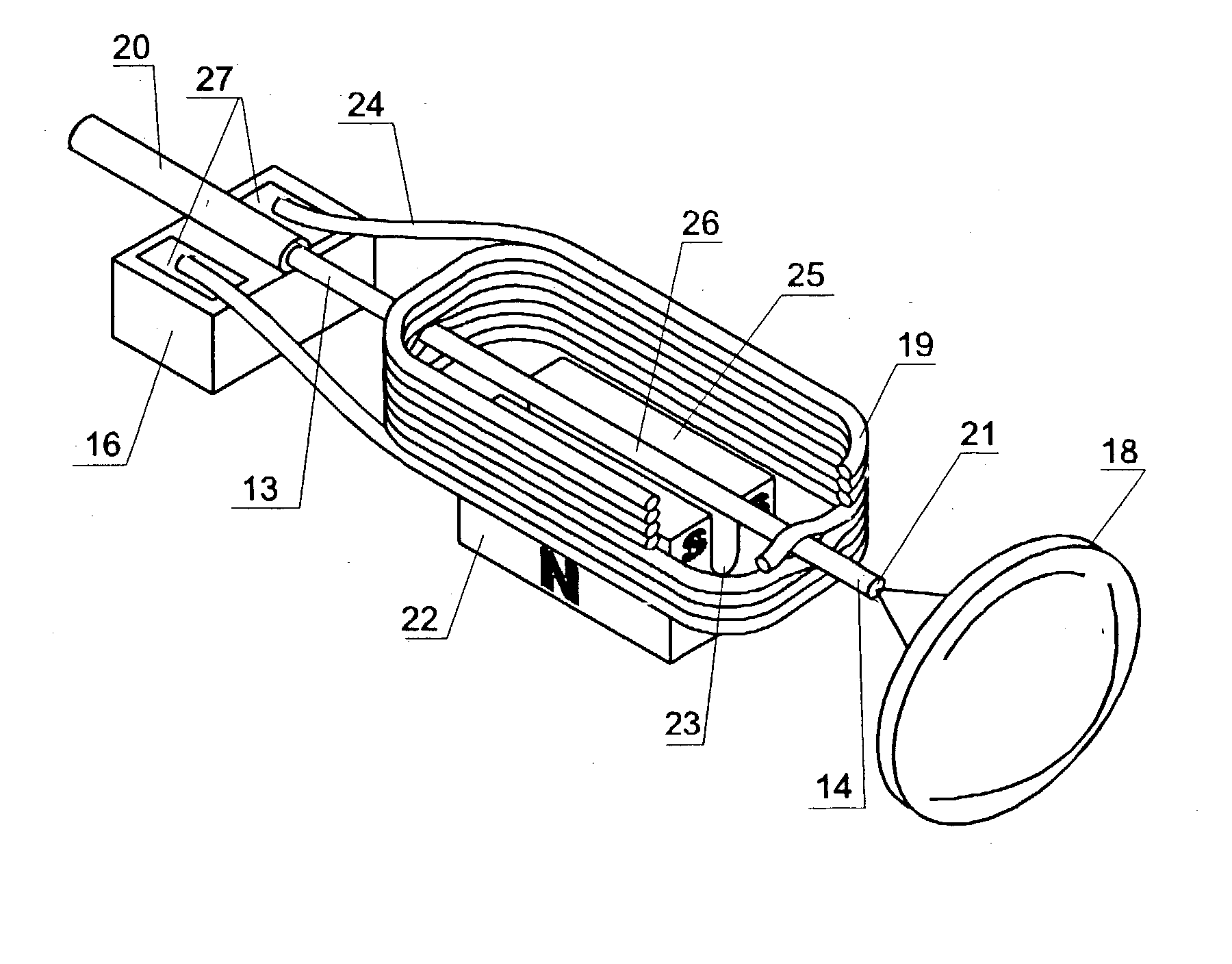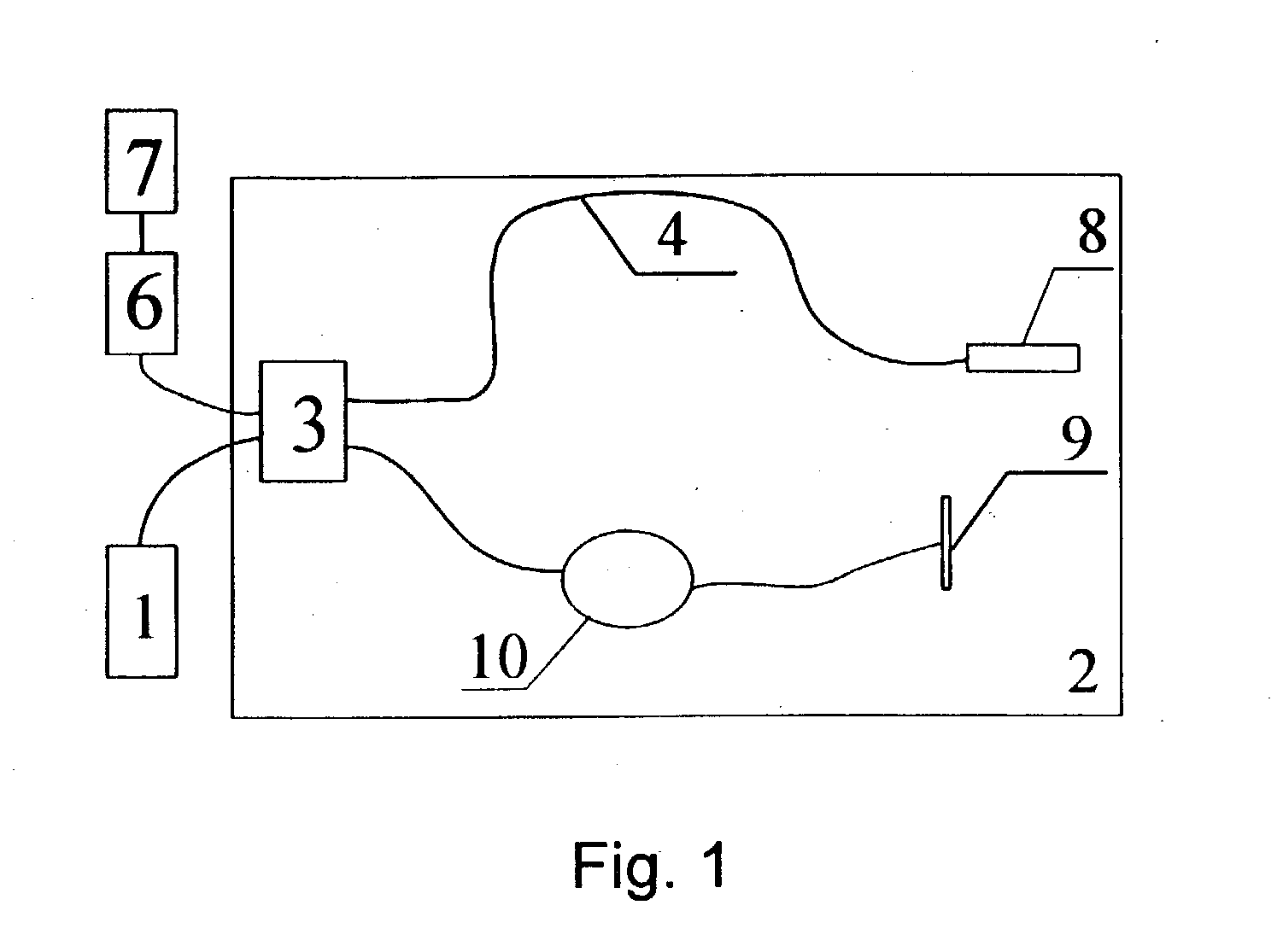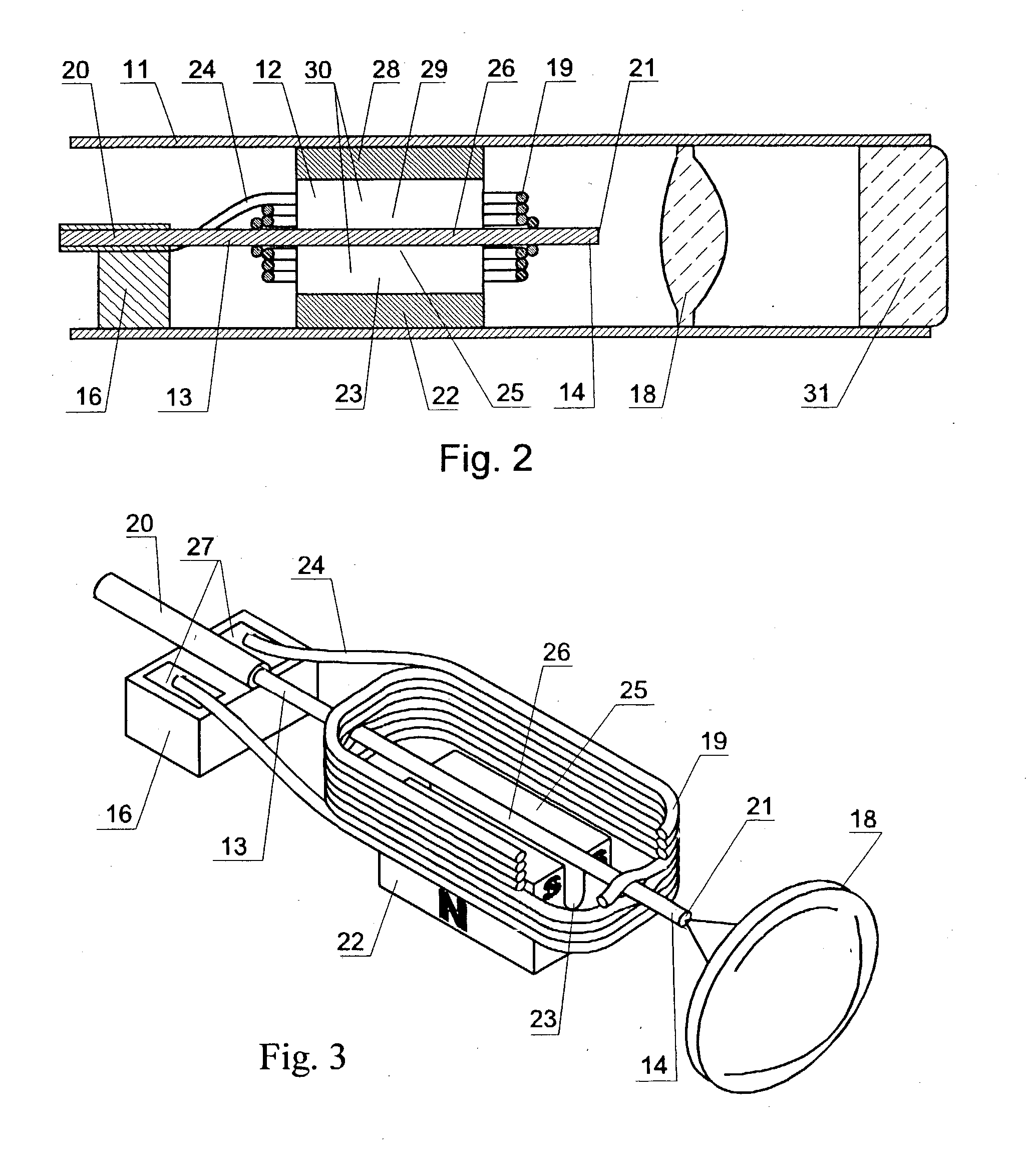Optical coherence tomography apparatus, optical fiber lateral scanner and a method for studying biological tissues in vivo
a coherence tomography and optical fiber technology, applied in the direction of instruments, catheters, applications, etc., can solve the problems of limiting the possibility of using this device for diagnostics, unable to apply these devices for medical diagnostics, and studying samples in the direction of approximately perpendicular direction, so as to improve performance and improve data
- Summary
- Abstract
- Description
- Claims
- Application Information
AI Technical Summary
Benefits of technology
Problems solved by technology
Method used
Image
Examples
Embodiment Construction
[0068] The operation of the developed apparatus for optical coherence tomography and the developed optical fiber probe will be best understood from the following description of carrying out the method for diagnostics of biological tissue in vivo.
[0069] The method for diagnostics of biological tissue in vivo is carried out the following way.
[0070] An optical beam in the visible or IR range is directed, for instance, with the aid of a laser, toward a biological tissue under study, the later being a biological tissue covered with epithelium. An image of the biological tissue covered with epithelium is obtained by visualizing the intensity of back-scattered optical radiation beam with, for example, a confocal microscope. In the acquired image, the basal membrane is identified, which separates the epithelium from underlying stroma. Diagnostics is made on basis of the state of said basal membrane.
[0071] In a specific embodiment, said biological tissue covered with epithelium is a biologic...
PUM
| Property | Measurement | Unit |
|---|---|---|
| diameter | aaaaa | aaaaa |
| diameter | aaaaa | aaaaa |
| optical length | aaaaa | aaaaa |
Abstract
Description
Claims
Application Information
 Login to View More
Login to View More - R&D
- Intellectual Property
- Life Sciences
- Materials
- Tech Scout
- Unparalleled Data Quality
- Higher Quality Content
- 60% Fewer Hallucinations
Browse by: Latest US Patents, China's latest patents, Technical Efficacy Thesaurus, Application Domain, Technology Topic, Popular Technical Reports.
© 2025 PatSnap. All rights reserved.Legal|Privacy policy|Modern Slavery Act Transparency Statement|Sitemap|About US| Contact US: help@patsnap.com



